6 Standing Workouts for a Stronger, Leaner Core
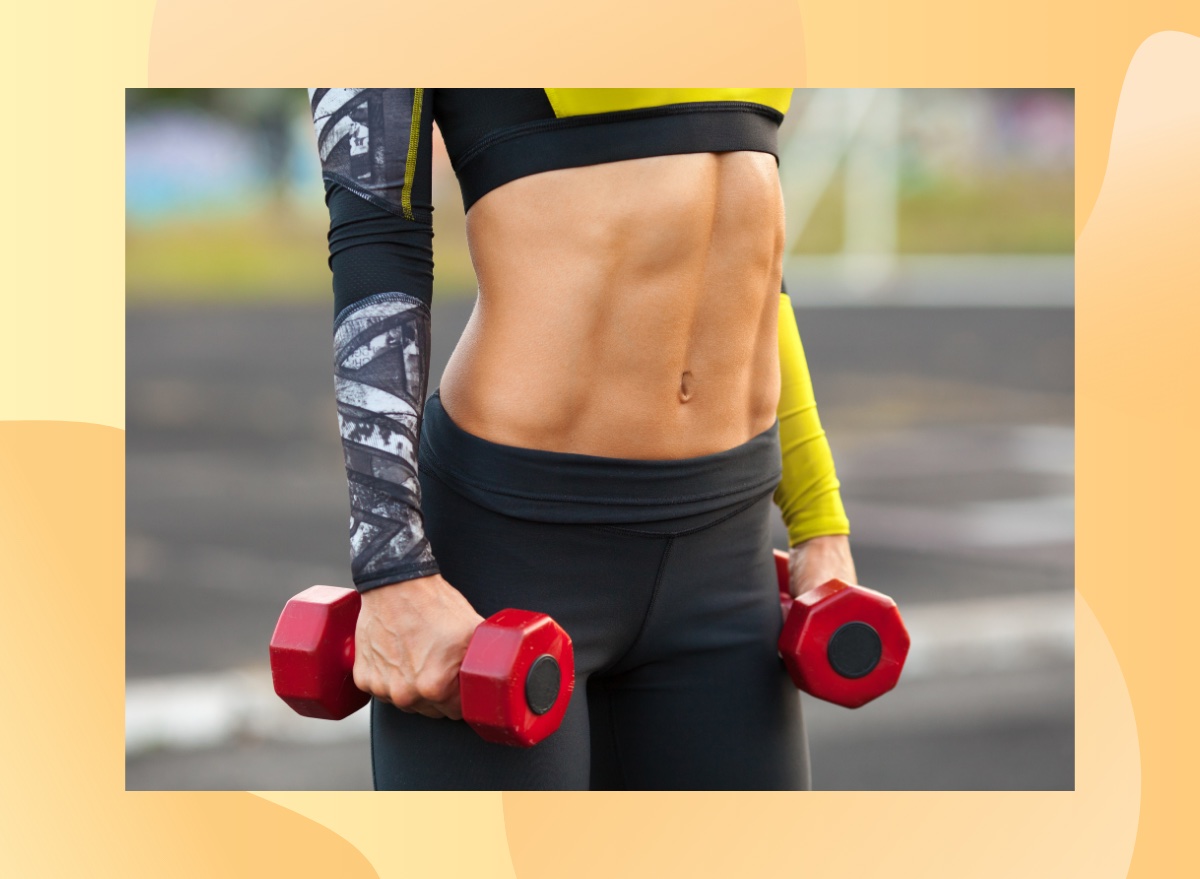
If you're tired of endless crunches and floor exercises, you're not alone. As a professional dancer, choreographer, and fitness professional at Pure Barre for the past 12 years, I've helped countless clients transform their bodies through movement. My experience working with both adolescents and adults has shown me that standing exercises can be incredibly effective for building core strength—whether you're an athlete looking to enhance performance or someone rebuilding strength post-partum. Ready to discover how you can strengthen your core while staying on your feet? These six standing workouts will revolutionize your approach to core training.
How Standing Exercises Burn Fat
When we talk about "burning fat," it is important to consider the "full picture," which includes more than simply folding your body in half while laying on the floor. Burning fat from a chemical perspective means that your body is using fat cells as a source of energy. Typically, though, your body is much more likely to use things like carbohydrates as an energy source first before fat, as carbohydrates are much easier for your body to break down as energy. With that, the "full picture" of fat burning is important to consider, as things like diet, stress, and other environmental factors in your life are huge parts of the equation beyond fitness alone!
While things like crunches and situps are an effective way to engage the abdominal muscles, it is important to consider that your core consists of more than your abs alone; think of your core as 360º, which then includes your sidebody and back. These muscles are integral to not only move effectively when doing "life things" such as walking, playing with your kids on the floor, and picking up all of your grocery bags in one fell swoop, but engaging the full scope of your core musculature can also help you reach your specific fitness, aesthetic, and/or performance goals efficiently. By performing specifically standing core exercises, you are also working on balance, an incredibly important factor in overall fitness and an equally important means of working your core muscles in all ways. Standing exercises also often involve more muscles and larger ranges of motion, which can increase both caloric expenditure and involve additional benefits, such as proprioceptive training (training that improves your sense of body awareness) and stability training more effectively than core work from the ground alone. Your body is a POWERFUL tool and you can literally use it to strengthen itself; in effect, YOU can be your own workout machine!
The 6 Most Effective Standing Core Exercises
Squat Variations
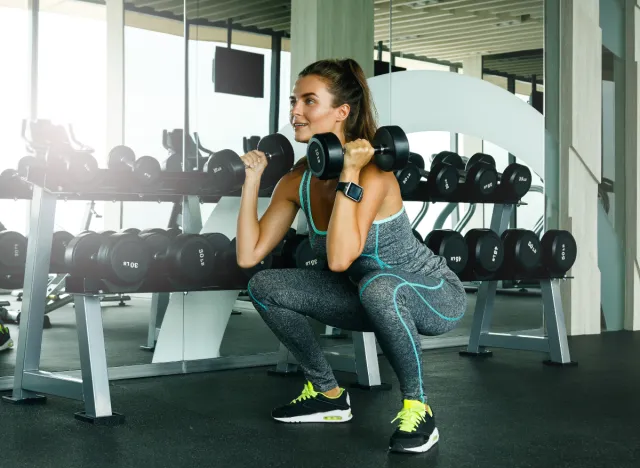
Targets:
Glutes, quadriceps, hamstrings, full core engagement
How To:
Option to use weights to add intensity. With one weight in each hand, walk your feet slightly wider than hip width, toes face forward or slightly turned out. Rack the weights at your shoulders
Movement:
- Slowly bend your knees to squat down, then squeeze your glutes and push through the floor to stand up. Repeat for 30 seconds.
- Rest for 10 seconds between each set. Aim for 3 sets total.
Modifications:
Consider a range of motion and resistance. Additionally, you can hold onto the edge of a counter or place your hands on a wall for support and balance.
Why It Works:
○ Squats are an incredibly efficient means of core engagement, as it is a compound exercise that requires multiple joints and muscles to work together to perform the movement. The more muscles at work typically means the more energy required to do the movement, which means a higher caloric expenditure. With that, the full range of motion engages both the front and back of the core (abdominals, erector muscles around the spine, and stabilizer muscles) which make squat variations a true queen of core work.
Lunge Variations
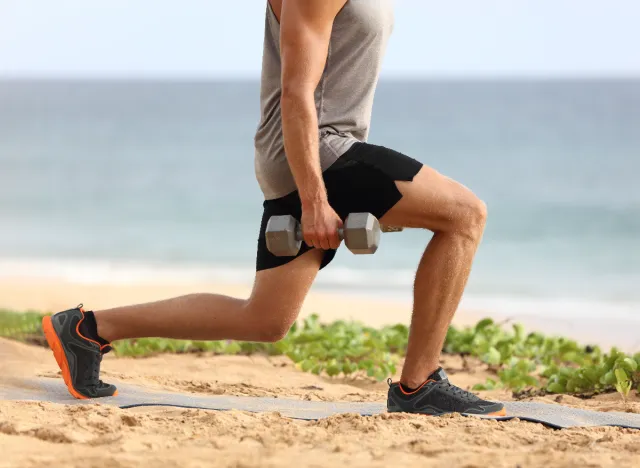
Targets:
Glutes, quadriceps, hamstrings, full core engagement
How To:
Option to use weights to add intensity. With one weight in each hand, step your feet hip width apart parallel. Arms long by your sides.
Movement:
- Reverse Lunge: step your right foot back to bend your knees to lunge. Stand back up Repeat for 30 seconds, then repeat on the left side
- Forward Lunge: step your right foot forward to a lunge (targets quadricep of the front leg more directly). Repeat for 30 seconds, then repeat on the left side
- Curtsey Lunge: with lighter weights, step heels together, toes apart, arms in an "O" shape at chest level. Step your right foot back and across toward left diagonal, and bend your knees to lunge. Stand back up. Repeat for 30 seconds, then repeat on the left side
- Rest for 10 seconds between each set.
Modifications:
Consider a range of motion and resistance. Additionally, you can hold onto the edge of a counter or place your hands on a wall for support and balance.
Why It Works:
Similar to squats, lunges require multiple joints and muscles to work simultaneously. In addition, the split stance inherent in a lunge movement asks for stabilizing muscles in the core to engage in order to balance. Working on balance is an incredibly important aspect of overall strength.
Wide 2nd
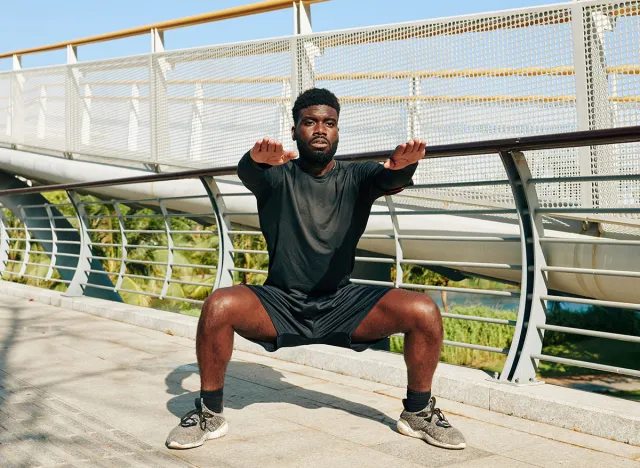
Targets:
Quadriceps, hamstrings, inner thighs (adductors), outer thighs (abductors), improves balance
How To:
Option to use a couch, wall, or chair for balance. Walk your feet out wider than your hips and turn your toes out slightly. Make sure your shoulders are stacked over the hips
Movement:
- Lower down (seat toward your knee line) then stand back up. Option to reach your left arm overhead and add a sidebend to the right as you lower down, and then lift upright as you extend your legs. Repeat for 30 seconds, then switch sides.
- Rest for 10 seconds and repeat. Aim for 3 sets.
Modifications:
Consider range of motion. Come up higher in your position as needed, and can always place 2 hands on a support as needed.
Why It Works:
Similar to squats and lunges, this variation enhances hip mobility, which allows you to access deeper core muscles through the pelvic floor and lower trunk.
Standing Leg Abduction
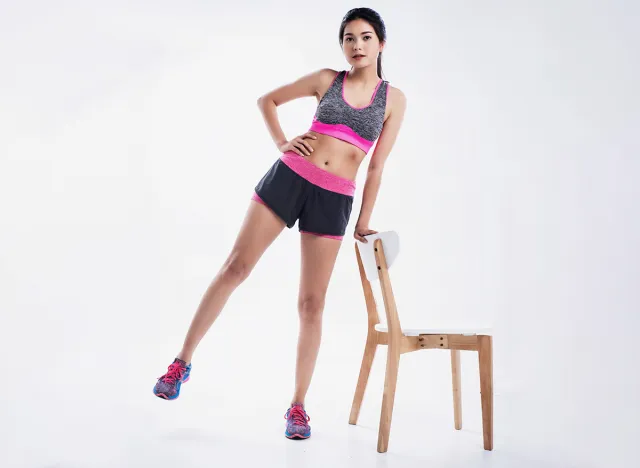
Targets:
Glutes, abs (obliques)
How To:
Work near a chair, wall or counter for balance. Turn so your left side is profile to your support and hang on to your support with your left hand. Reach your right arm out to the side at shoulder height. Stand with your feet hip width apart and parallel. Extend your right leg out straight to the side in line with your hip the low diagonal; point your foot. Softly bend your standing leg.
Movement:
- Slowly sidebend toward your support as you reach your right arm up and lower your right leg, then slowly lift your upperbody back upright as you reach your right arm to the side and lift your right leg. Repeat for 30 seconds.
- Rest for 10 seconds and repeat on the other side.
Modifications:
Consider range of motion. Can keep your arm stationary and focus on your leg as the lever.
Why It Works:
Working in the frontal plane (lateral movements) target a different mode of oblique engagement and stability. Your obliques are truly the unsung heroes of core engagement and overall strength; plus, working on your obliques while using your legs effectively as "dumbbells for your abs" is a great way to enhance the aesthetics of your abdominal wall (an added perk to feeling and moving better, for sure).
Countertop Parallel
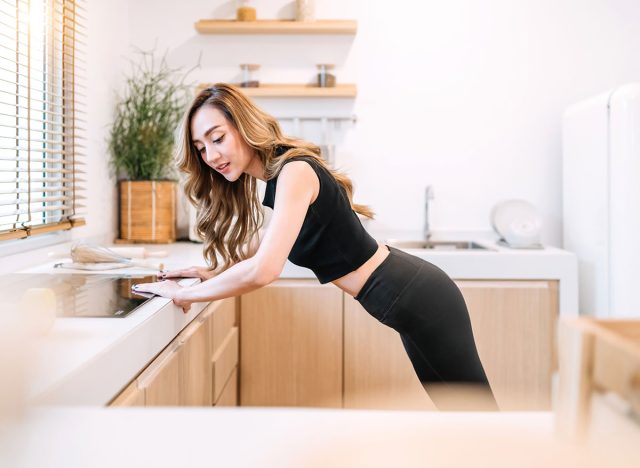
Targets:
Glutes, hamstrings, abs
How To:
Work near a chair, wall or counter for balance. Turn so your left side is profile to your support. Hinge forward from the waist with a flat back and place your left forearm on your support. Place your right hand behind your head; elbow wide. Bring your feet hip width apart and parallel. Extend your right leg straight back behind you, then bend your heel to your seat; flex your foot. Softly bend your standing leg. Note if you prefer the Tabletop variation: come to all fours on the floor, and extend your right leg the same way. Option to add a resistance band for an extra burn!
Movement:
- Slowly lower your right knee in line with your left then press back up. Repeat for 30 seconds.
- Rest for 10 seconds and repeat on the other side. Aim for 3 sets total.
Modifications:
Lift the upper body higher to minimize strain on the standing (stable) leg, and decrease range of motion as needed to avoid strain in the lower back.
Why It Works:
Targeting all sides of the body is an integral part of a literally well-rounded routine. Focus on the posterior chain in a way that enhances core stability and strength by folding in half allows the glutes to turn into the powerhouse of this movement. With this movement, too, your obliques and abdominal muscles have to engage to maintain proper alignment.
Bent Over Rows (and Variations)

Targets:
Latissimus dorsi (back), erector muscles, abs
How To:
Option to use heavier weights, one in each hand. Stand with your feet hip width apart, then hinge at your hips, keeping a soft bend in your knees. Aim to keep your back neutral with a long spine. Reach your arms straight down. Palms face in (variations include palms facing back for a Wide Row, or forward for an Underhand Row).
Movement:
- Pull your elbows up, pause at the top, then control the weights back down to your starting position. Repeat for 30 seconds.
- Rest for 10 seconds, then repeat. Aim for 3 sets total
Modifications:
Consider range of motion and resistance. Can perform the movement without weights and focus on squeezing the muscles of the back as the primary movers first, then add resistance over time.
Why It Works:
○ Rows target the posterior chain in a fundamental way by using the muscles that develop strong posture. Improving posture is not only an incredibly common goal, but better posture can also lead to myriad other benefits, such as access to fuller ranges of motion in other movements, which can increase your potential for muscular gains over time! Plus, a strong, developed back is an important aspect of core strength overall.
Your 30-Minute Standing Core Workout
Using the outlined sets and reps above in each exercise, you can pick anywhere from 3-6 of these exercises to use in an incredibly effective at-home workout!
Daily Habits That Support Core Strength
Alongside your dedicated workout time, consider things like diet, sleep, water intake, and daily physical activity outside of structured exercise. While what you eat is a primary focus of overall caloric balance, things like adequate sleep and hydration are huge pieces of the puzzle. In addition, focusing on how much you move beyond your workouts can also move the needle to unlocking the results you aim to achieve. Simple habit changes like parking farther away from the grocery store entrance, to adding a lap around the block before or after dinner, to spending 10 minutes in backyard with your kids can add up!
And please, if you can, prioritize sleep. You can scroll again in the morning.
The Bottom Line
The most important thing when it comes to ANY workout: keep going! Consistency is key, well beyond perfection. Even 10 minutes a day can change your life over time. And if you enjoyed this article, don't miss How Long Your Walking Workout Should Be To Shrink Belly Fat.









